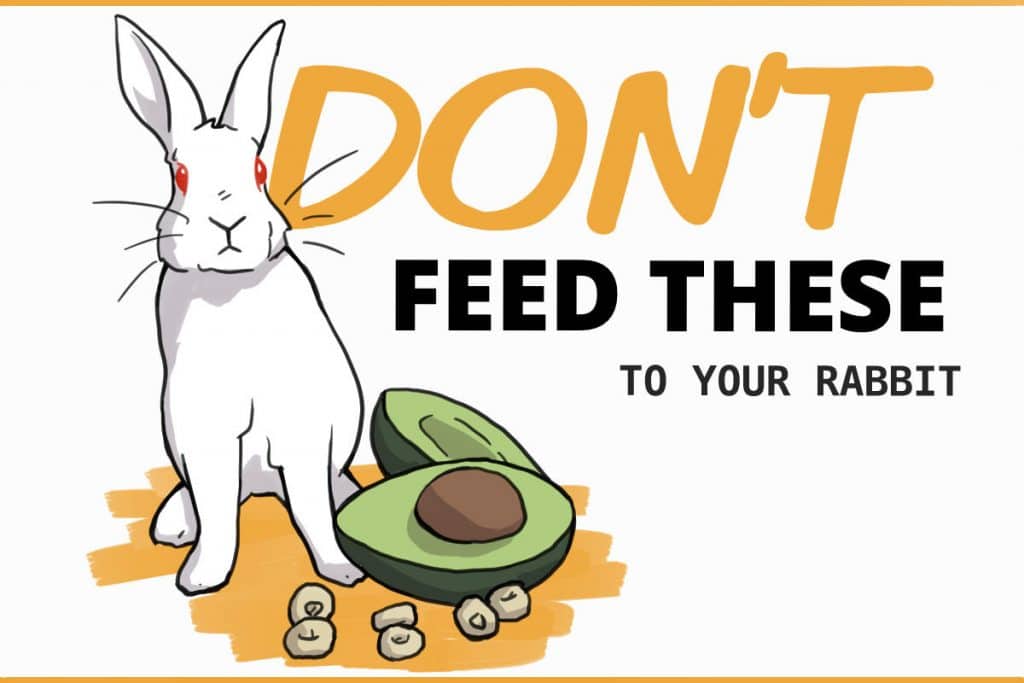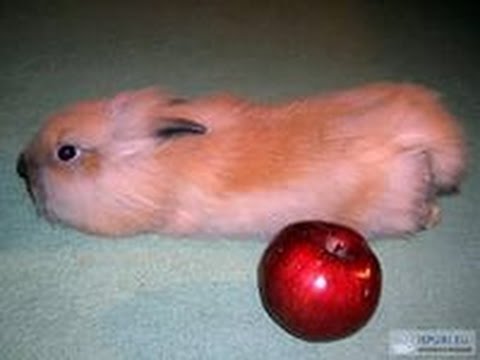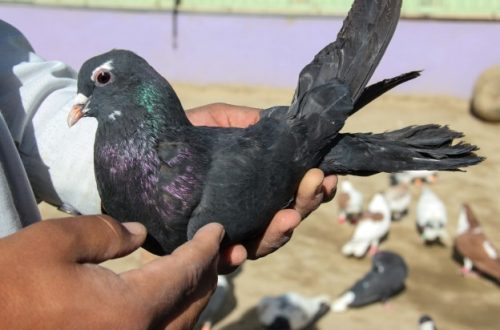
What should a decorative rabbit eat in order not to get sick from the wrong diet?
Among pets, the content of decorative rabbits is becoming more common. These are small fluffy eared animals that do not make loud sounds, they are always nearby, but they do not ask to be petted. They busily chew hay and look at their owners with large, spaced eyes. They will not leave a bunch of peas on the carpet, and you do not need to get up in the morning and go for a walk with them. On the other hand, a fluffy lump causes a kind smile if it does not gnaw on wires or furniture and does not get to the leaves of the hostess’s favorite flower.
Contents
Features of fluffies
Decorative rabbits were bred by selection and genetic selection of the smallest specimens. As a result of many years of work, decorative rocks were obtained, but the result was not only miniaturization, but also susceptibility to a whole bunch of diseases. Therefore, the maintenance of decorative rabbits at home depends on the conditions created for them. Features to keep in mind while maintaining:
- special dietary requirements;
- lack of drafts;
- on the growth of claws on the legs and incisors in the mouth.
feed base
All domestic breeds rabbits are prone to obesity. Overfeeding them and often giving them high-calorie foods is unacceptable, fatty liver will be fatal. But underfeeding, and especially the lack of vitamins and minerals, will make a pet with a dull coat ugly. Another consequence of malnutrition and overfeeding can be diarrhea, which is detrimental to a small animal.
If the claws are cut with nail scissors monthly, then only the rabbit himself can grind off the incisors, and it is not for nothing that he is a rodent. And in order to grind teeth and not harm the environment, appropriate food is required. Therefore, the diet of the animal underlies his health and external decorative appearance. So what do decorative rabbits eat?
Hay and its place in rabbit nutrition
Up to 80% of the pet’s diet should be hay, homemade or purchased from a pet store. Hay must be of high quality. In this case, the color of the dried grass should be green. This means that the grass after mowing lay in the row for no more than a day, did not get caught in the rain. Mature grass has a full range of useful elements.
Gray hay is dangerous because even during drying it began to rot and becomes unsuitable for rabbits. In addition, hay should not contain grasses with a large amount of toxic substances. So, it is contraindicated to give tansy to a rabbit, but for a person it is a cure for many diseases. Same with many others medicinal herbs, which should not be in the hay. The list of such herbs is long, to name just a few:
- celandine;
- spurge;
- buttercup;
- wild leek.
Here are a few of the herbs that are poisonous to rabbits. Even wormwood in hay in large quantities is harmful to the rabbit.
How much and what kind of hay is required
It matters a lot where the hay is made. The most the best grass grows in forest clearings and meadows. However, buying ready-made hay of unknown origin, you can get grass cut from the side of the freeway. The entire bouquet of exhausts is absorbed by the plant and will be transferred to the rabbit. From such hay, the health of the pet will not increase. This means that food must be purchased in trusted places.
The need for hay is year-round, during the day the rabbit eats from 150 grams to half a kilogram, depending on its weight. You can calculate the need if you multiply the weight of the rabbit by 0,08, the resulting number is still multiply by 0,8 and by 365. This means that the daily requirement for feed in a rabbit is 8% of its weight per day. Hay should be 80% of the total feed, 365 – the number of days in a year. Thus, you can calculate and prepare your own hay for a four-legged friend.
Hay in the rabbit feeder should always be present, since these animals should eat little by little, but up to 30 times a day. Night and morning hours are reserved for their main meal. Therefore, a fresh portion is laid in the feeder at night. Due to roughage, incisors are ground in rabbits and hairballs are removed from the stomach. Rabbit swallows it during hygiene procedures. But one hay cannot provide a set of necessary nutrients.
Granular rabbit food
A special dry balanced product for feeding decorative rabbits is sold in pet stores. This is very nutritional granuleswhich pets willingly eat. But feeding with such food as the main one can lead to obesity. Therefore, a daily allowance of two tablespoons is enough to provide the daily need for additional elements.
In this case, food is selected that contains:
- grass fiber – more than 20%;
- protein – less than 15%;
- fat and calcium – up to 1%.
Toddlers for the rapid growth of granular feed are given more, but gradually reduce the rate.
Succulent foods and their importance
Greens is a good vitamin supplement in the diet. It is only necessary that the leaves added to the feeder are washed and dried. You can’t feed raw greens, you need to give it quite a bit so that the rabbit does not eat up light food, but wants to eat hay. If the pet is given more tasty food, he is too lazy to chew grass, and this is bad for his health.
Dandelions with a fatty root, nettle, plantain, and other herbs growing everywhere are suitable for food, but not from the side of the road. From cultivated plants, rabbits love parsley and eat it whole. They like dill and tops of root crops. But they give a little of everything, and after the first treat with a new plant, you need to carefully watch the reaction of the stomach to the product.
leafy food
In order for the teeth to grind down, fresh branches of deciduous trees should be in the diet. Linden, aspen, willow are the best wood additives for grinding teeth, they also replace part of the feed. You should not give the bark of those trees and shrubs that have an astringent effect – bird cherry or oak. Birch bark can affect the kidneys, so you can occasionally give a birch twig. Of the root crops, rabbits consider carrots to be the best delicacy. Boiled potatoes should be given cut in half, otherwise it will turn into a toy. If gourds are given, then the seeds must be removed. At the same time, you should always remember about a trial portion with subsequent observation.
Vitamin and mineral supplements
Most herbs contain potassium, and it promotes the excretion of sodium from the body. Therefore, rabbits at any age need table salt, which they can get if there is always a brown mineral stone in the cage. It also contains other necessary elements.
An excellent supplement in the diet will be the addition of brewer’s yeast. They contain a storehouse of useful substances in an easy form for assimilation. Especially in need of such an additive are rabbits in demolition and during the feeding of offspring. Feeds the mother for up to two months with the gradual transfer of babies to regular food. Young rabbits should receive grass and succulent food from the age of four months.
Water
Clean water should be in the drinker constantly and replace not fresh daily. In this case, raw non-chlorinated water is best, but settled water is also suitable. It is undesirable to feed rabbits with boiled water, it is not so useful.
What not to give rabbits
Products from the human table can kill a small pet. If foods that can lead to excess weight are undesirable, then it is unacceptable to give:
- any vegetables and fruits touched by rot and mold;
- carbohydrates – pasta or bread will lead to obesity of a decorative rabbit;
- sweet – sweets and similar products;
- meat delicacies.
Observing the rules of feeding and hygiene, you can enjoy the look of a well-groomed eared rabbit up to 12 years old, that is how long decorative rabbits live.


Watch this video on YouTube







